What controllers are supported by HPACUSCRIPTING in HP Software?
- JJack ZavalaSep 13, 2025
HPACUSCRIPTING supports only HP Smart Array controllers. Review the HPACUSCRIPTING documentation for the latest information.
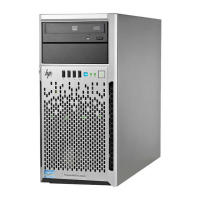






What controllers are supported by HPACUSCRIPTING in HP Software?
HPACUSCRIPTING supports only HP Smart Array controllers. Review the HPACUSCRIPTING documentation for the latest information.
| Bus type | DMI |
|---|---|
| Stepping | E1 |
| FSB Parity | No |
| Processor code | SR0PH |
| Processor cache | 8 MB |
| Processor cores | 4 |
| Processor model | E3-1220V2 |
| System bus rate | 5 GT/s |
| Processor series | Intel Xeon E3-1200 v2 |
| Processor socket | LGA 1155 (Socket H2) |
| Processor codename | Ivy Bridge |
| Motherboard chipset | Intel® C204 |
| Processor frequency | 3.1 GHz |
| Processor cache type | Smart Cache |
| Processor lithography | 22 nm |
| Processor manufacturer | Intel |
| Processor package size | 37.5 x 37.5 mm |
| Processor front side bus | - MHz |
| Processor boost frequency | 3.5 GHz |
| Processor operating modes | 64-bit |
| ECC supported by processor | Yes |
| PCI Express configurations | 1x16+1x4, 1x8+3x4, 2x8+1x4 |
| Supported instruction sets | AVX, SSE4.1, SSE4.2 |
| Thermal Design Power (TDP) | 69 W |
| Number of processors installed | 1 |
| CPU multiplier (bus/core ratio) | 31 |
| Memory types supported by processor | DDR3-SDRAM |
| Memory channels supported by processor | Dual |
| Memory clock speeds supported by processor | 1333, 1600 MHz |
| Memory bandwidth supported by processor (max) | 25.6 GB/s |
| Maximum internal memory supported by processor | 32 GB |
| HDD size | - \ |
| HDD interface | - |
| Total storage capacity | 0 GB |
| Maximum storage capacity | 12 TB |
| Number of HDDs installed | 0 |
| Memory slots | 4x DIMM |
| Internal memory | 4 GB |
| Memory clock speed | 1600 MHz |
| Graphics card | G200 |
| Graphics card family | Matrox |
| Cabling technology | 10/100/1000Base-T(X) |
| Networking features | Gigabit Ethernet |
| USB 2.0 ports quantity | 6 |
| Ethernet LAN (RJ-45) ports | 2 |
| PCI Express slots version | 3.0 |
| Power supply | 350 W |
| Power requirements | 100 - 240 V |
| Power supply input frequency | 50 - 60 Hz |
| Operating altitude | 0 - 3048 m |
| Non-operating altitude | 0 - 9144 m |
| Storage temperature (T-T) | -30 - 60 °C |
| Operating temperature (T-T) | 10 - 35 °C |
| Storage relative humidity (H-H) | 5 - 95 % |
| Operating relative humidity (H-H) | 10 - 90 % |
| Sustainability certificates | ENERGY STAR |
| Chassis type | Rack (1U) |
| Processor ARK ID | 65734 |
| Intel TSX-NI version | 0.00 |
| Intel Identity Protection Technology version | 1.00 |
| On-board graphics card model | Not available |
| Depth | 750 mm |
|---|---|
| Width | 434.6 mm |
| Height | 43.2 mm |
Identifies components on the server's front panel, including drive models.
Details the LEDs and buttons on the server's front panel and their status indicators.
Lists and identifies the various connectors and ports on the server's rear panel.
Explains the LEDs and buttons located on the rear panel of the server.
Illustrates and labels the key components found on the server's system board.
Shows the physical locations and numbering of DIMM slots for memory installation.
Defines the specifications and compatibility of PCIe riser board slots.
Describes the function and settings of the system maintenance switch.
Explains the purpose and use of the Non-Maskable Interrupt (NMI) header for diagnostics.
Details the meaning of LEDs present on the system board for status indication.
Illustrates how drive bays are numbered for both LFF and SFF drive models.
Explains the status indicators for the server's drive LEDs.
Details the LED indicators for the FBWC module and their interpretations.
Shows the physical locations of the server's internal fans.
Describes the included Torx screwdriver and its use in hardware configuration.
Provides step-by-step instructions for powering on the server.
Outlines methods for safely powering down the server.
Explains how to extend the server from its rack for maintenance.
Details the procedure for safely removing the server from a rack.
Instructions for removing the optional security bezel for access.
Steps for removing the server's access panel for internal component access.
Instructions on how to reinstall the server's access panel.
Guide to removing the internal air baffle for component access.
Steps for reinstalling the server's air baffle.
Procedure for removing the PCI riser cage.
Instructions for installing the PCI riser cage.
Information on HP Care Pack services for server installation and support.
Details on resources available for planning server rack installations.
Guidance on selecting an optimal environment for server installation.
Specifies clearance and airflow needs for rack installations.
Outlines environmental temperature guidelines for server operation.
Details electrical power requirements and safety guidelines for installation.
Explains the necessary electrical grounding procedures for safety.
Lists important warnings and cautions related to server operation and handling.
Provides critical warnings and safety information regarding rack installations.
Lists items included in the server shipping carton.
General guidance on installing hardware options.
Steps for installing the server into various types of racks.
Instructions on how to install an operating system on the server.
Guide to initial server boot process and selecting boot options.
Instructions for registering the server with HP.
General advice for installing multiple hardware options efficiently.
Details on installing the security bezel for physical access control.
Information on supported drive types (LFF, SFF) and installation requirements.
General guidelines for installing server drives.
Step-by-step guide for installing a non-hot-plug drive.
Instructions for installing a hot-plug drive into the server.
Guide for connecting the Mini-SAS cable for storage configurations.
Overview of the server's embedded and optional storage controllers.
Procedure for installing a storage controller card in an expansion slot.
Steps for installing the FBWC module and its capacitor pack.
Instructions for installing an optical drive.
Introduction to memory options and compatibility.
Details on HP SmartMemory features and benefits.
Guide to identifying DIMM characteristics from labels.
Explains the difference between single-rank and dual-rank DIMMs.
Describes the server's memory channels and slot configurations.
Provides guidelines for populating DIMM slots correctly.
Step-by-step instructions for installing a DIMM into the server.
Information on installing expansion boards in PCIe slots.
Steps to install a dedicated iLO management port module.
Overview of installing and enabling a Trusted Platform Module (TPM).
Detailed procedure for installing the TPM board.
Guidelines for securely storing BitLocker recovery keys.
Steps to enable the TPM functionality via RBSU.
General guidelines for server and hardware option cabling.
Details on cabling for FBWC capacitor packs and storage controllers.
Specifics for cabling non-hot-plug LFF drive cages.
Cabling instructions for hot-plug LFF drive cages.
Cabling for eight-bay SFF hot-plug drive configurations.
Explains the cabling for optical drives in LFF and SFF models.
Details on cabling power supplies.
Specifics for cabling non-redundant power supplies.
Instructions for cabling redundant power supplies.
Describes server modes (online/offline) for utilities.
Information on accessing server specifications and compatibility.
Overview of the iLO Management Engine for server management.
Details on the Integrated Lights-Out (iLO) subsystem for server administration.
Explains the Active Health System for diagnostics and monitoring.
Information on the Integrated Management Log (IML) for event recording.
Guide to using Intelligent Provisioning for server deployment.
Details on HP Insight Diagnostics for system testing and troubleshooting.
Instructions for using the Erase Utility to reset the system.
Information on installing and using HP Insight Remote Support.
Guide to the Scripting Toolkit for automated server deployment.
Details on the HP Service Pack for ProLiant (SPP) for updates.
Information on using HP Smart Update Manager (SUM) for deployment.
Overview of the ROM-Based Setup Utility (RBSU) for configuration.
Instructions on how to navigate and use the RBSU.
Explains the server's auto-configuration process during initial boot.
Information on the boot options screen and available keys.
Steps to re-enter serial and product IDs after system board replacement.
Lists various utilities and features available for system management.
Details on the Array Configuration Utility (ACU) for storage management.
Guide to using the ORCA utility for RAID configuration.
Information on using the ROMPaq utility for firmware upgrades.
Explains the Automatic Server Recovery (ASR) feature.
Details on standard and legacy USB support.
Information on the server's redundant ROM support feature.
Guidance on maintaining the server's software and drivers.
Instructions for installing and updating device drivers.
Advice on updating server software and firmware.
Information on HP's version control tools for software management.
Information on supported OS and virtualization software.
Details on HP's change control and notification services.
Lists guides and resources for troubleshooting server issues.
Instructions for replacing the server's system battery.
Explains regulatory model numbers for product identification.
FCC notices and regulations for digital devices.
Information on identifying the FCC classification label.
FCC compliance statement for Class A digital devices.
FCC compliance statement for Class B digital devices.
FCC conformity statement for US products with FCC logo.
Warning about unauthorized modifications to the device.
Requirements for using shielded cables for compliance.
Canadian regulatory notices for Class A equipment.
CE marking compliance with EU directives.
Instructions for disposing of waste electronic equipment in the EU.
Japanese regulatory compliance notices.
BSMI regulatory compliance notices.
Korean regulatory compliance notices for Class A equipment.
Chinese regulatory compliance notices for Class A equipment.
Vietnam compliance marking information.
Ukraine regulatory compliance notices.
Compliance statements for laser products, including optical drives.
Warnings and guidelines for replacing the internal battery.
Taiwan battery recycling requirements.
Specific statement regarding power cords for Japan.
Acoustic noise emission statement for Germany.
Precautions to prevent damage from static electricity.
Methods for proper grounding to prevent ESD.
Details operating and non-operating environmental conditions.
Physical dimensions and weight of the server.
Technical details of the server's power supply options.
Information to have ready before contacting HP support.
Contact details for HP support in the US and worldwide.
Overview of HP's Customer Self Repair program.
How to provide feedback on the documentation.
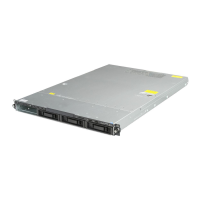

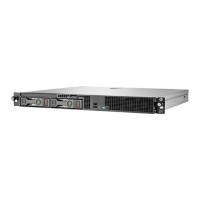
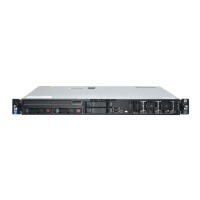
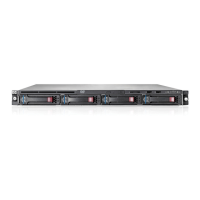
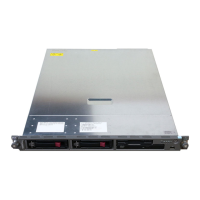
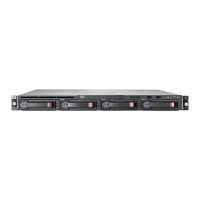
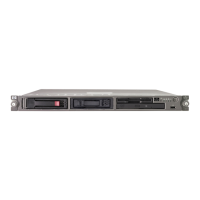

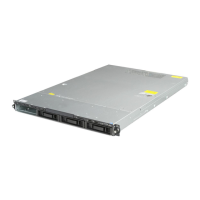
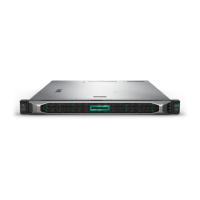
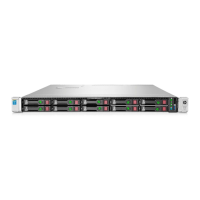
